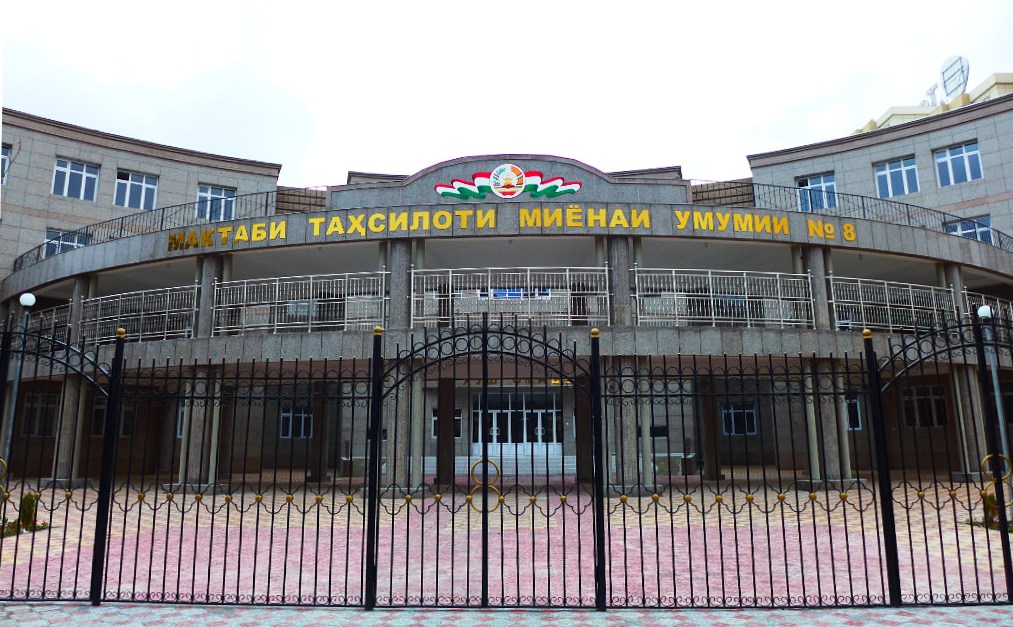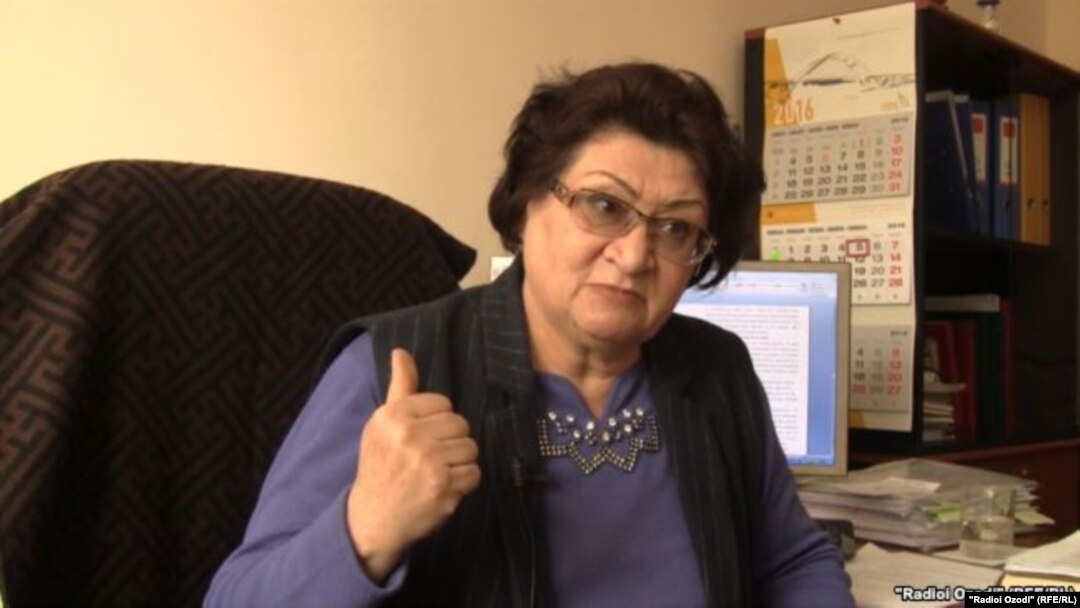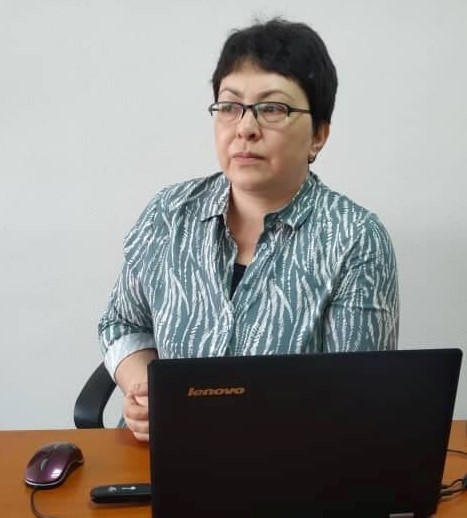In Tajikistan, parents complain that their children study in overcrowded classrooms. Experts say this harms the quality of education.

In the capital of Tajikistan, there has been a severe shortage of school capacity in public schools in recent years. Classrooms serve 40-50 students simultaneously, with three pupils sitting at a table at a time. In some schools, classes are held in three shifts.
In one of the popular groups in the Tajik segment of the social media network Facebook (Tajik Mama group), which has more than 42,000 followers, the shortage of school capacity is one of the frequently discussed topics.
One of the group participants notes that due to school overcrowding, parents are turned away and have to bribe to get their child admitted to the first grade.
“There are not enough schools. There are more than 40 people in a class. No school will accept a child unless you pay a ‘share’. In another case, they say there is no available place,” she said.
Another parent under the same post writes that her child was admitted to gymnasium No 9 for free, where he is studying with 32 other pupils. She admits that in the first grades 43-45 pupils are studying at the same time.
“We have 33 pupils in the class. The class is not friendly, disunite. So I can’t say how many are studying by propiska (a permit to reside in a given place – translator’s note.). But there are definitely neighbours in the neighbourhood,” she said.
According to Education and Science Minister Rahim Saidzoda, there are 3,940 secondary schools in the country with 128,827 teachers as of the end of July 2022. The ministry added that there is a shortage of about 3,400 teachers in the country.
The number of students increases every year, both in Dushanbe and in other parts of Tajikistan.
According to 2022 data from Agency for Supervision in the field of education and science of the Republic of Tajikistan, more than 6 billion somoni (about 550.8 million USD) was allocated from the state budget for education, which is about 19 per cent of total state budget expenditures.
“Sit and chat”?
A teacher at a newly built school in Dushanbe marked with concern that currently the number of students in his school is twice the norm. It is difficult to teach 40-50 students at a time, check their homework and give everyone time and attention, he said.
“We get 35 to 45 people studying in one class at the same time, sitting three people at a desk. In other words, the school was originally built for one number of students, but over time there are twice as many students,” the teacher added.
Teacher of physics and math at one of the schools in Dushanbe, built in the early second half of the last century, notes that the number of students exceeds 2-3 times the original capacity. In order to reduce the load a little, the school administration has had to turn some of the corridors and halls into new classrooms.
“There are more children every year. Although new schools are being built, they are not enough. We were promised by the Ministry of Education that the old school building would be demolished and a modern large building would be built in its place,” says the teacher.
Ali Qurbonmamadov graduated from School No. 8 in Dushanbe last year. He admits that there were 50 people studying in their class at the same time, which greatly affected the quality of the education they received.
There was a lot of noise, disorder and even fights, he said.
In one 45-minute lesson, the teacher could not manage to check all the homework, and students had to wait several days for answers. The class was very noisy and overcrowded.
“As a result, there were a lot of boys who did not let the teachers conduct the lessons, all the time making noise, shouting, yelling and showing no respect to the teachers,” Ali recalls.
Such conditions affected not only the quality of education received, but also the relationships between pupils.
“We used to quarrel among ourselves very often and we had sort of internal conflicts in the class, there was also disrespect among the students and there were a lot of fights,” Ali recalled.
He said the larger number of students and the “noisy and disobedient class” made many teachers reluctant to teach, so they mostly came to them to sit and “chat”.
Another graduate of a Dushanbe school said there were 49 students in her class, which had a very negative impact on the learning process.
“Our class always lacked desks and chairs. Some even stood during lessons or just walked out. The teacher would try to explain the topic, but even if you wanted to, you wouldn’t hear what he was saying. Lessons were simply disrupted, it was difficult for both students and teachers,” she said.
What does the law say?
The obligations and responsibilities imposed on the state are enshrined in both the Constitution and other normative legal acts of Tajikistan.
For example, the right of the child to education is stated in Articles 28 and 29 of the Convention on the Rights of the Child (ratified by Tajikistan in 1993), in Article 41 of the Constitution, and in the Law of Tajikistan “On Education”.

Munira Inoyatova, former Minister of Education of Tajikistan, believes that all plans for the provision of pupil places, according to current laws, should be prepared in a timely manner and correctly adjusted for each year. However, the expert suggests that the plans are not always properly prepared and implemented.
According to Gulchehra Rakhmanova, Director of the Public Foundation “Legal Initiative”, these conditions are a direct violation of children’s rights to education and access to it.
“In fact, the situation with overcrowded classrooms is the opposite of the ideal picture, where each child is given enough space and a separate desk. Instead, we see classrooms where the number of children is too large, which in turn creates unfavourable conditions for learning,” Rakhmanova told CABAR.asia.
If there is a problem that is so often talked about, it means it exists and needs to be addressed, she said.

“And as a parent and citizen, who pays taxes and is responsible in accordance with the law of Tajikistan “On the responsibility of parents for the upbringing and education of children”, I have the right to demand affordable and quality education for my child, that includes the conditions in which the child receives this education,” Rakhmanova said in a conversation with CABAR.asia.
Demography and urbanisation of the city — factors influencing the problem
According to experts, planned housing construction should be developed in conjunction with the construction of school and pre-school institutions. However, Tajikistan is currently seeing a lot of rapidly built residential buildings, while the number of schools under construction is noticeably smaller.
Kamil Areshov, founder of the Dasti Yori charitable organization, has been building classrooms in Tajikistan’s regions for seven years. He said the problem of school overcrowding is closely linked to other problems in education, including the shortage of teachers and their level of competence.
“Even if we build enough schools, we need to provide these schools with enough teachers and qualified specialists, who are also in a shortage today,” Areshov told CABAR.asia.
According to him, in the regions, many rural schoolchildren have to walk several kilometres to neighbouring rural schools because of the shortage of schools.
“Because of it, the balance is disturbed and there are more than 30 pupils in classrooms, three at a desk, while the norms in the education law are quite different,” Areshov said.
Comprehensive measures are needed, including training competent teaching staff, decent pay and benefits for teachers, and building schools and additional classrooms, he said.
Munira Inoyatova said the country still has a problem of a leftover approach to children’s education.
In her opinion, one way to solve or minimise this problem could be to diversify the types and forms of general education institutions. For example, increasing the number of public schools, which would have a positive impact on the quality of education, solve the problem of overloaded educational institutions and increase competition in the quality of education.
The expert suggests that for this purpose it is necessary to attract investments into the sector.
“The state needs to spark the interest of the private sector with different favourable conditions, including tax incentives,” Inoyatova said.

